IAF steps up its air attacks in Syria
Israeli Air Force is stepping up its air attacks in Syria against Iranian IRGC personnel, Iranian proxy militias as well as Syrian regime forces. Only during March 2023, IAF conducted 7 attacks against Iranian and Iranian-affiliated targets in Syria. Ammunition storage depots, A/A emplacements, apartments utilized as safe houses and IRGC co-ordination centers, and even individual vehicles transporting weapons and ammunition were targeted in Damascus, Tartus, Quneitra, Aleppo, Al Bukamal, and Yabrud causing material damage and human losses.
It has to be noted that, IDF routinely does not comment on airstrikes that occurred in Syria. However, the modus operandi as well as the fact that IAF is the only air force in the wider region with both the intent and the capability to degrade Iranian capabilities in the area, leaves us with no doubt as to who is conducting the airstrikes in Syria.
Since 2020 there has been a steady and notable increase in the air attacks conducted by IAF against targets in Syria. While in 2020 24 attacks were conducted in Syria, in 2023 the number of attacks saw a 100% increase compared to 2020, as 48 air attacks in total occurred in 2023. During the first 3 months of 2024, 19 air attacks have occurred against Iranian IRGC personnel, Iranian proxy militias as well as Syrian regime forces.
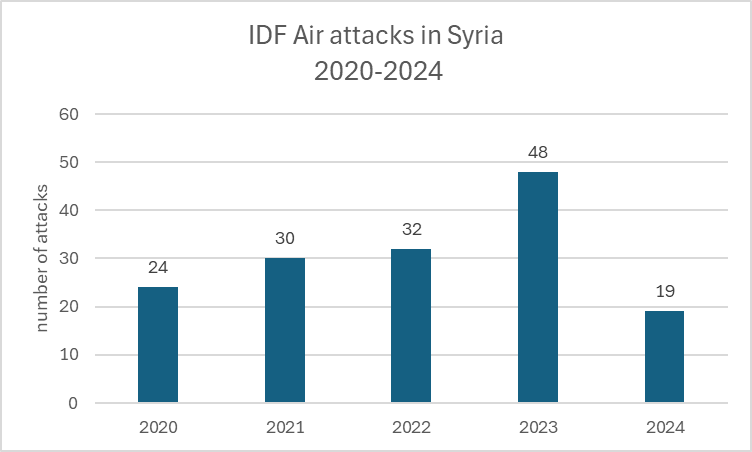
The majority of the air attacks in Syria for 2024 occurred in Damascus where IRGC has a strong presence coordinating the arms and ammunition flow from Iran via Iraq and Syria to Lebanon and Hezbollah, but also engaging in capacity building, assisting Syrian regime forces to enhance their capabilities in various fields such as SIGINT,IMINT as well as Counterintelligence. Al- Bukamal which is under the total control of Iran-affiliated militias, is another hotspot that attracts regularly the IAF attention as it constitutes the border crossing area where ammunition and weapons from Iran via Iraq are entering Syria heading towards Lebanon and Hezbollah. In 2024 so far 2 airstrikes have occurred there.

Often, the air attacks are consisting of multiple airstrikes which are causing widespread damage and personnel losses, while in other occasions a single precision airstrike is enough to neutralize the selected target. That was the case on 20/01/2024, at 10:20 local, when the Israeli Airforce conducted an airstrike in the W. Mazzeh district in Damascus targeting a building hosting several IRGC members.
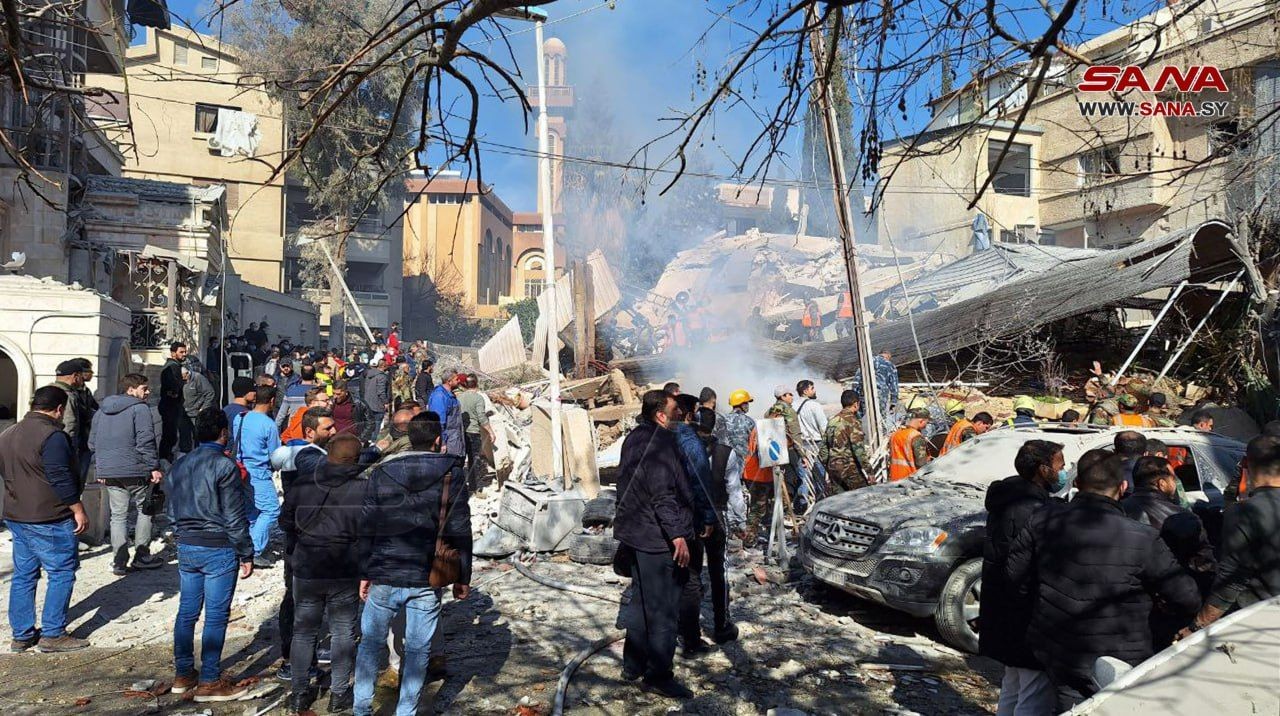
Brigadier General Sadegh Omidzadeh aka Haj Sadiq, Deputy Commander of Intelligence for the IRGC forces in Syria together with four other IRGC Officers were killed. The strike was confirmed by various Iranian and Iranian affiliated media.
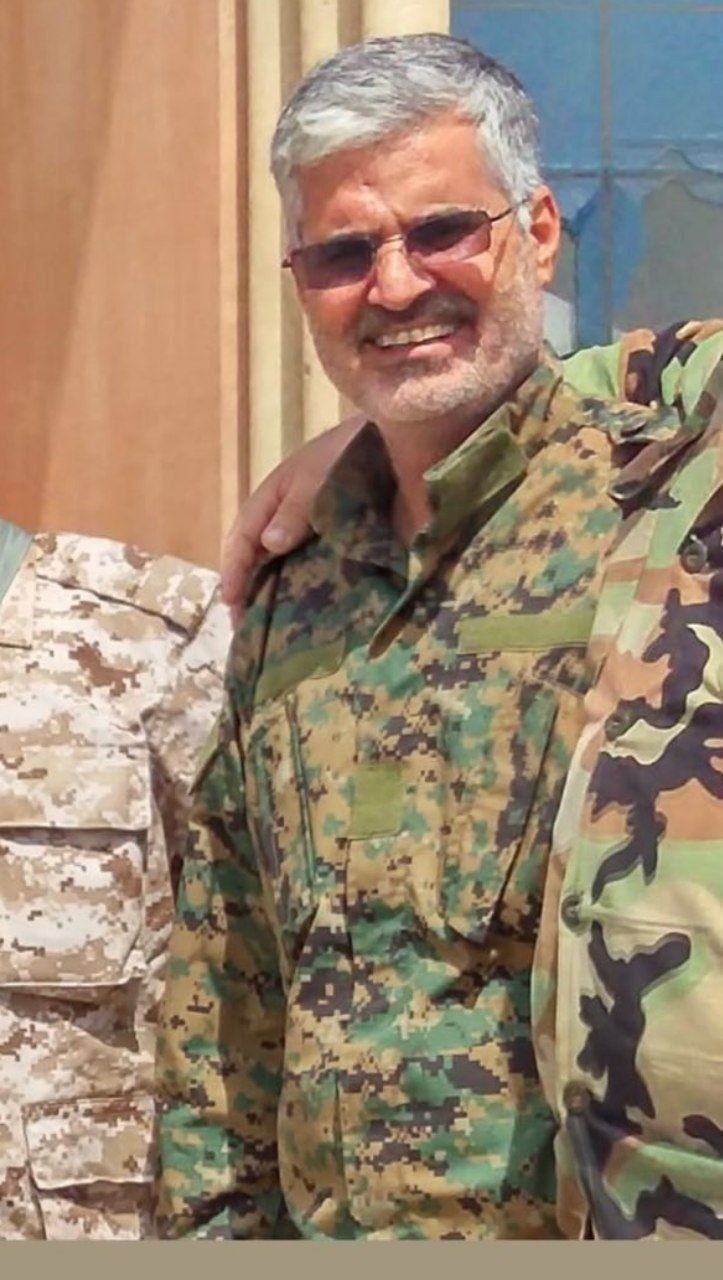
According to the Syrian Observatory for Human Rights only in 2024, the casualties from IAF airstrikes amounted to:
– 13 IRGC members
– 20 members of the Lebanese Hezbollah.
– 12 Iranian-affiliated militias of Iraqi nationality
– 17 Iranian-affiliated militias of Syrian nationality
– 9 Iranian-affiliated militias of non-Syrian (undisclosed) nationality
– 36 Syrian army personnel.
This last week, both the frequency and the intensity of IAF air attacks in Syria have increased. On 26/03/2024, the Israeli Air Force conducted a series of airstrikes (reportedly at least 10) in Deir Ezzor and Al-Bukamal in eastern Syria, killing several Iranian-affiliated militants. According to a usually well-informed open source, the air strikes targeted assets belonging to Iran’s Islamic Revolutionary Guards Corps and in particular personnel belonging to Iran’s Unit 4000, the Special Operations Division of the Islamic Revolutionary Guards Corps’ Intelligence Organization, and the special operations unit of the IRGC’s Quds Force in Syria, known as Unit 18840. Unit 4000 of the IRGC is involved in ammunition and weapons transfer from Iran to Iraq, Syria and Lebanon while Unit 18840 of the IRGC Quds Force in Syria, is involved in intelligence gathering as well as the preparation and execution of terrorist attacks.

On 28/03, a series of airstrikes (at least 15 were reported) targeted Iranian-affiliated targets in Aleppo province. Weapons and ammunition depots were hit extensively and at least 36 fatalities were reported among Syrian regime forces, IRGC members, Iranian affiliated militias, and Hezbollah operatives while more than a hundred were wounded. It was the most intense airstrike in recent years and its ferocity was depicted in the announcements made by Iranian, Syrian, and Russian officials with which they strongly condemned the attacks.
On 29/03 according to local media, an airstrike targeted a single residential building in Al-Bahdaliyah, which is located on the outskirts of Damascus. The modus operandi suggests that a High-Value Target was engaged by the IAF. Syrian regime-affiliated media, acknowledged the incident without providing further details.
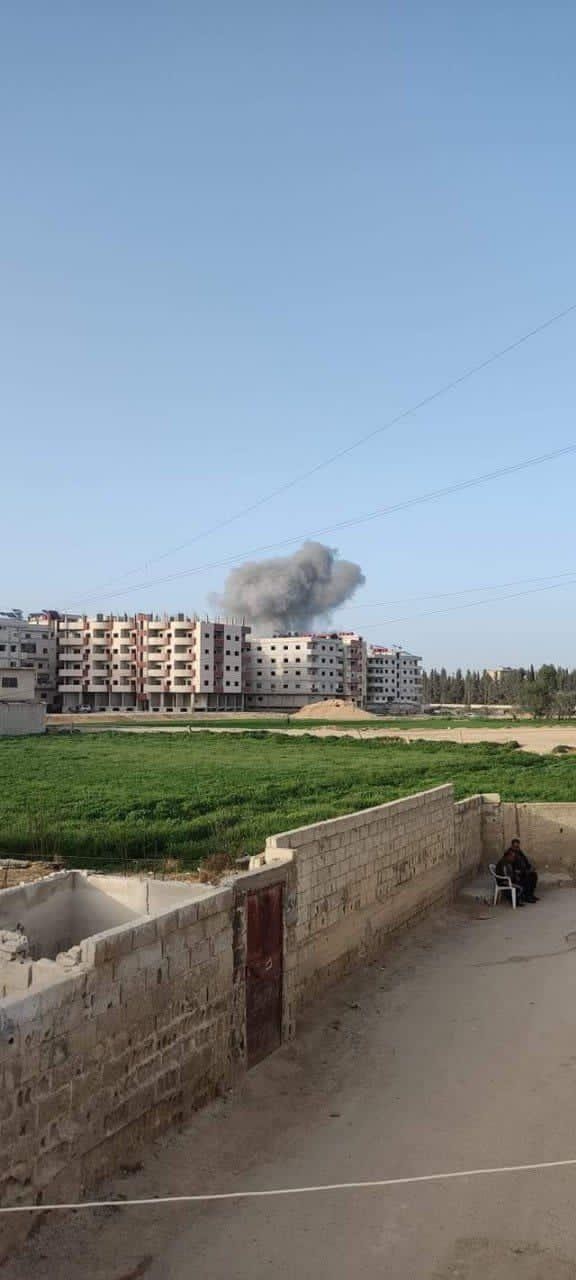
The significant quantitative and qualitative escalation of Israeli air attacks against Iranian IRGC personnel, Iranian proxy militias as well as Syrian regime forces, comes in line with the recent statement of Israeli Defense Minister Yoav Gallant who said that ”The military will expand the campaign [against Hezbollah] and increase the rate of attacks in the north.” and ”Israel is turning from defending to pursuing Hezbollah, we will reach wherever the organization operates, in Beirut, Damascus and in more distant places.”
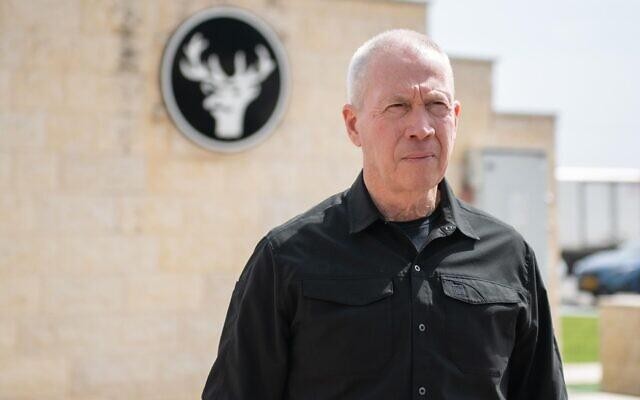
It is assessed that:
- The ability of IDF to target effectively and with precision Iranian High Value Targets in Syria, highlights both the increased intelligence collection capabilities of the Israelis as well as the operational security flaws in the Iranian/Syrian side.
- IDF will continue targeting Iranian personnel and Iranian proxy militias in Syria to degrade their capabilities as well as to disrupt the arms and ammunition flow from Iran via Iraq and Syria towards Lebanon and Hezbollah.
- The Increased tempo of Hezbollah operations against IDF in Northern Israel and the subsequently increased consumption of ammunition (mainly ATGMs) will increase the need for weapons and ammunition transfer from Iran to Hezbollah and that in turn will increase the number of IAF airstrikes against Iranian affiliated targets in Syria.
- A further qualitative and quantitative increase of Israeli airstrikes in Syria might indicate that an Israeli ground operation against Hezbollah in Lebanon is probable, as IDF before starting a ground incursion in Lebanon, will first degrade Hezbollah’s capabilities especially in the AT domain. Hezbollah for its precision strikes against Israeli targets is mainly relying on either 9M133 Kornet ATGM (supplied from Syrian stocks) or its Iranian copy ”Dehlavieh” ATGM supplied directly from Iran. The disruption of the arms flow of ATGM weapons and ammunition will constitute one of the operational requirements for a ground incursion of Israel in South Lebanon.








